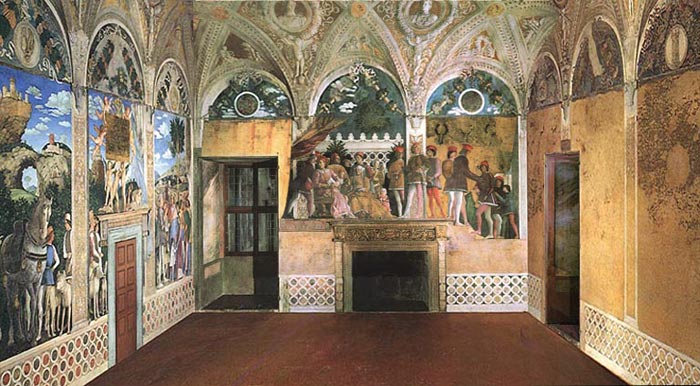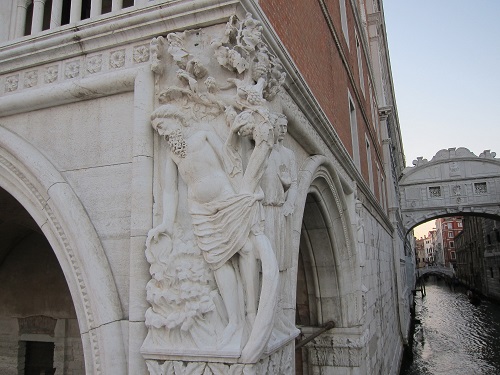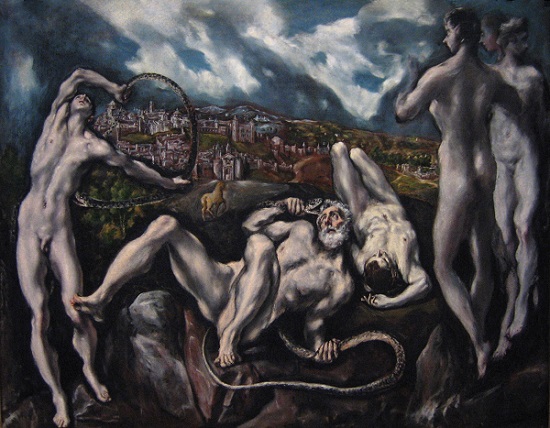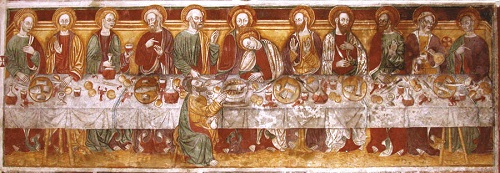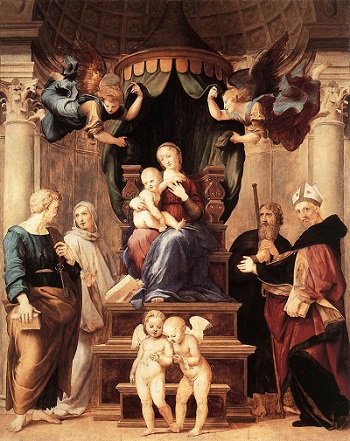
(The Return from Rome of Cardinal Francesco Gonzaga – 1474)
On the walls of the Camera degli Sposi in the Ducal Palace at Mantua, Andrea Mantegna (c.1430-1506) painted some life-size informal portraits of the Gonzaga family. In this portrait (c 1474) almost as a curtain has been drawn back, we see in a loggia, Ludovico Gonzaga, the second Marquis holding up his hand in greeting to his returning son, Cardinal Francesco Gonzaga. The Cardinal is holding the hand of his young brother, Ludovico, Protonotary and future Bishop of Manuta, who in turn holds that of his nephew. Sigismondo, also a future Cardinal. The other small boy is Sisgismondo’s brother, Franncesco, the future fourth Marquis and, their father Frederigo, the third Marquis, stands to the far right..
Looking out of the picture is Christian I, King of Denmark (the brother-in-law of Ludovico’s wife Barbara of Brandenburg) and, in profile, Frederick III, Holy Roman Emperor.
There are several interesting aspects to this fresco painting. Firstly, there is clearly a self-importance that this family of Italian rules ascribed to themselves, as they relegate these monarchs to the back of the gathering. It is said that the Duke of Milan was furious that ‘the two most wretched men in Europe’ (Christian I and Frederick III) were included in the work was he himself was omitted.
Secondly, this work probably shows that the various portraits were added as the work progressed as it is unlikely that the meeting depicted ever took place, as King Christian and Emperor Frederick are not noted as being in Italy at the same time. This scene is probably a sequel to the Court Scene on the adjacent wall, where the Marquis is shown being brought a message, traditionally believed to be the news that his son had been elevated to the position of Cardinal.
Thirdly, there are no female family members portrayed here, albeit that the image of Ludovico looks very effeminate, and the imaginary portrayed here is very stiff, and the colours used earthy and one could suggest, masculine.
Finally, the city and the terrain in the background are clearly imaginary, certainly as the terrain does not in any way represent the flat terrain around Mantua.
However, I find this an interesting piece of work as it provides a insight into political relationships and how this family perceived its own level of self-importance. You do get a true sense of the grandeur of these frescos and the family story they tell when you see them in situ. Something that I recommend you do, if you get the opportunity.
